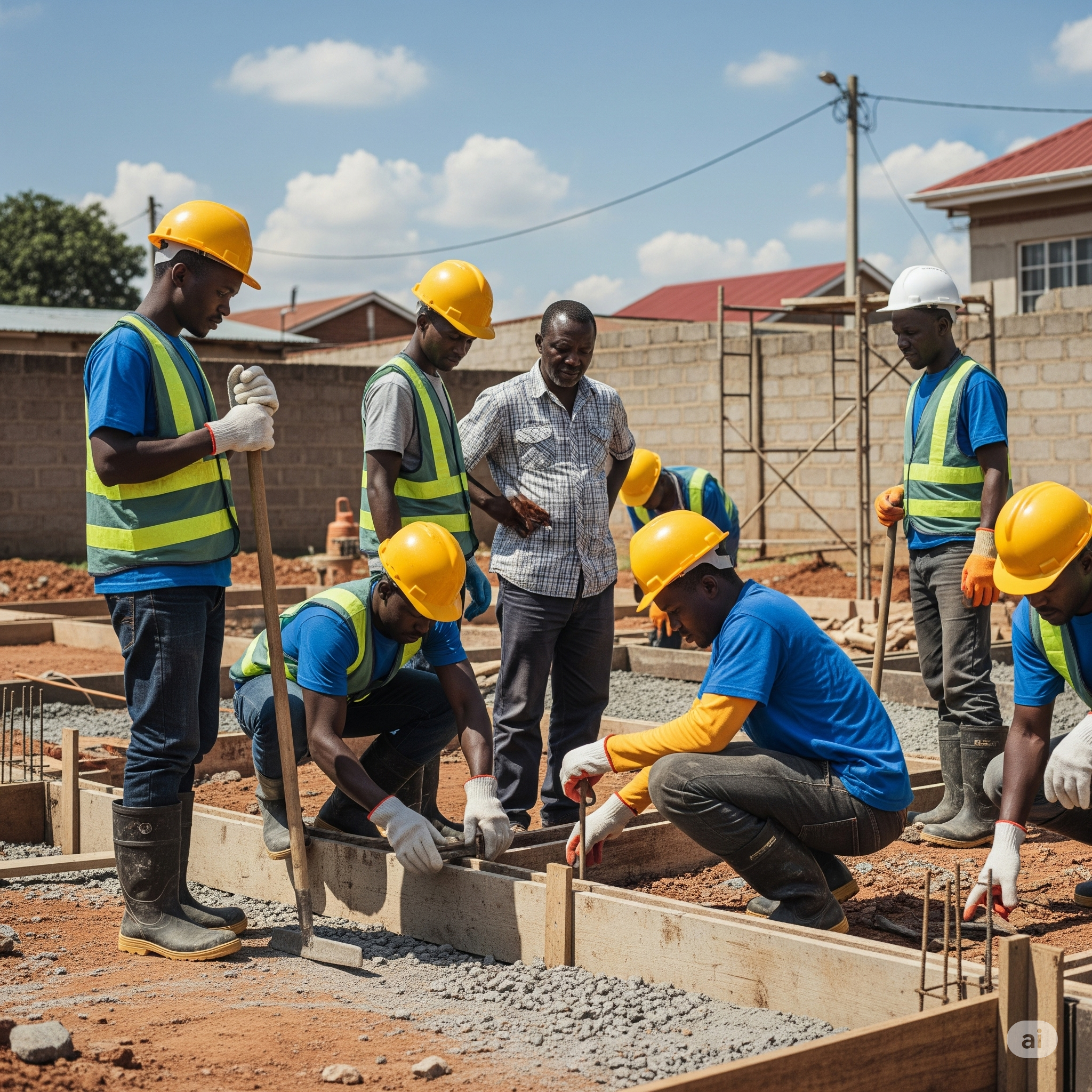Whether you’re building a rental unit in Ruiru or a bungalow in Ngong, construction site safety should never be ignored. In Kenya, most residential builds involve fundis, informal contractors, or self-managed owners with limited formal supervision. Yet even small-scale projects carry real risks: injury, site shutdowns, and costly delays.
This guide outlines key site safety measures tailored to Kenyan conditions, especially for individual homeowners and developers managing small- to medium-sized construction projects.
1. Prioritize Site Organization from Day One
Start by setting up a clear layout for your site, including:
- Material storage (cement, ballast, steel)
- Mixing areas for plaster and concrete
- Water tank setup (see Top Water Tank Brands in Kenya)
- Access and delivery routes
- Temporary sanitation facilities
Mark each zone using ropes, timber pegs, or chalk lines. Poor organization is a leading cause of accidental injuries and project inefficiencies.
2. Stabilize Temporary Water and Power Installations
Most residential sites use temporary tanks and portable electricity setups. Key safety tips include:
- Secure tank stands using braced joints (see DIY Tank Stand Construction)
- Protect all pipework and joints from damage
- Insulate electric wires and prevent exposed connections
For added security, especially in urban settings, use tank shelters or lockable cages.
3. Ensure Workers Use Basic PPE
Even in informal sites, your fundis should have minimum protective gear:
- Helmets or hard hats for roofing and scaffold work
- Gloves and masks for cement handling
- Rubber boots in wet areas or foundation zones
- Reflective vests if construction is near roads
Safety gear is available from local hardware suppliers in towns like Juja, Athi River, and Mlolongo. For site perimeter security, consider affordable fencing options.
4. Maintain a Tidy Site
Disorganized sites increase risks of:
- Tripping injuries
- Snake bites in tall grass or debris piles
- Lost or damaged tools
Allocate specific zones for:
- Timber offcuts
- Steel offloads
- Tool storage and scaffold equipment
A clean site also supports faster work during installations like outdoor kitchens and backyard extensions.
5. Watch Foundations, Trenches, and Pits
For plots requiring deep foundations or soak pits:
- Support trench walls with timber or steel braces
- Mark open pits clearly, especially overnight
- Fill unused trenches as soon as possible
In areas with black cotton soils, refer to How to Build Low-Cost Septic Tanks and Soak Pit Design for Residential Plots for guidance on safe excavation and drainage.
6. Safeguard Water Pumps and Overflow Systems
If you’re using a solar or petrol-powered pump onsite:
- Fence off pump zones to avoid interference
- Secure all piping to prevent tripping hazards
- Use mufflers or boxes to reduce noise (see Pump Noise Reduction Techniques)
Also consider installing alarm systems for tank overflows.
7. Emergency Preparedness
Even on small projects, you should prepare for emergencies:
- Keep a stocked first aid kit onsite
- List emergency contacts for the nearest hospital or clinic
- Provide a bucket of sand or water for fires
- Train fundis on how to respond to snake bites or falls
Preparedness can mean the difference between a quick response and a major incident.
You don’t need a full-time safety officer to maintain a safe residential construction site in Kenya. Simple precautions, clear planning, and daily supervision can dramatically reduce risks.
A well-managed site not only protects lives but also improves worker morale, speeds up construction, and keeps your project on budget.
Explore More Site and Construction Guides:

